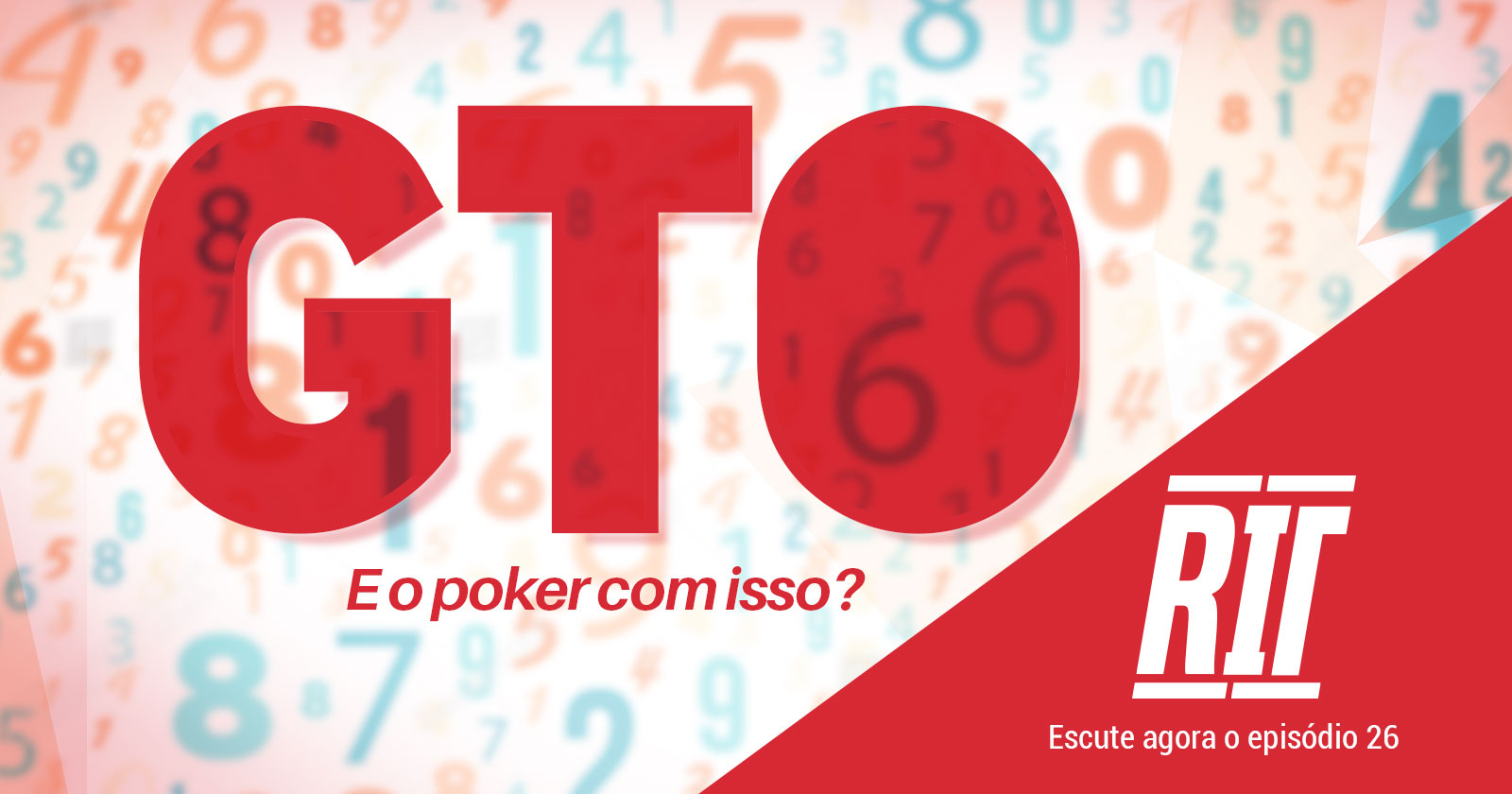Game Theory Optimal Poker
- Poker Gto Theory
- Game Theory Optimal Play
- Game Theory Optimal Poker Coaching
- How To Play Game Theory Optimal Poker
Game Theory Optimal Poker. Play exciting heads-up limit poker against an A.I. Designed to play optimally. Game Theory Optimal Poker is a Heads-up Limit Texas Hold'em playing machine that has been designed by former professional poker heads up specialist Ted Petrou. In technical terms, game theory optimal poker is a strategy such that no alternate strategy can beat it if played long enough. GTO stands for Game Theory Optimal, which means you’re playing the optimal poker strategy, or the best strategy possible. This is very math-oriented as well as self-focused. You’re doing what you’re supposed to do based on the cards, pot sizes, stack sizes, poker position, etc.

The debate has raged for years about whether players should be trying to utilize a game theory optimal (GTO) strategy or an exploitive one. In many cases, the debate is distracting players from what is really important. I’ll try to clear up some of the confusion.
What is Game Theory Optimal Poker?
GTO is achieved when you create unexploitable ranges. GTO play yields the highest possible expected value when your opponent utilizes an ideal strategy against you. Unfortunately, it does not yield the highest possible expected value (EV) when you are playing against weak opponents with non-GTO ranges. In these situations, you should be focusing on playing exploitive no-limit hold'em instead. When trying to conceptualize GTO, think about a game of 'Rock, Paper, and Scissors.' If you play a randomized, balanced mix of rock, paper, and scissors, you will be unexploitable. Any game play that is not “balanced” will be theoretically “exploitable.” Because GTO play is not exploitable, many players seem to view it as the most desirable way to play. However, at many poker games, playing a maximum exploitive style will yield superior results.
What is Maximum Exploitive No-Limit Hold'em?
Maximum exploitive NLHE occurs when a player chooses the most exploitive line to maximize his/her expected value. Most players do not play balanced ranges and, therefore, we should seek to maximize our edge by playing appropriately unbalanced in response. In a Rock, Paper, Scissors example, where we know that our opponent will throw rock 100% of the time, we would simply use paper 100% of the time. Even if we knew that our opponent threw rock 40% of the time, 30% paper, and 30% scissors, the maximum exploitive play would still be paper 100%. In NLHE, if you play heads up versus an opponent who folds 100% of the time to three-bets, your response would be to reraise 100%. It is important to note that if you are playing against a GTO opponent, the maximum exploitive strategy will be GTO. The appropriate response to a perfectly balanced Rock, Paper, and Scissors range is to be perfectly balanced yourself.
How does GTO Help you Win at Poker?
GTO is perhaps best used as a default strategy against good unknown opponents and against highly skilled opponents. However, if your goal is to achieve a high winrate, moving away from GTO and toward a more exploitive style of play will be necessary. In order to play exploitively, you need opponents who have weaknesses. This is why an essential part of having a good winrate at NLHE is table selection. If you find yourself challenging a bunch of GTO-like players, you are probably at the wrong table.
Understanding what GTO ranges look like is also helpful because it helps us to know how far our opponents are from a GTO strategy. This will help us to isolate weaknesses and attack them. Let’s briefly examine the math behind this without getting too bogged down in it. Consider a three-bet scenario where we are on the button, and we three-bet a standard 3x raise to 9x. We know that (x/(x+y))*100= breakeven % with fold equity (where x= amount we risk and y= amount in pot). So 9/(9+4.5)= 66.66%. Therefore, if we risk 9 to win 4.5, it needs to work 66% of the time, assuming we lose all of the pots where our opponent calls or reraises. Since we know that is not actually the case, a GTO approach to facing this three-bet will require us to fold less than 66.66% of the time. With this knowledge, we can look to exploit players who fold more than 66% of the time versus three-bets. Despite knowing a fold to three-bet % over 2/3rds is exploitable, it is generally only advisable to fight back against over 1/3rd of three-bets against quality opponents. Why? Because many opponents, especially at low games, do not three-bet enough, and have overly tight three-bet ranges. In fact, many nitty low-stakes players only three-bet the most premium hands for value and don’t balance their ranges at all. The most successful strategy yielding a high winrate is to play exploitively against weak ranges and GTO (or close to it) against other more GTO-like players.
GTO is Great for Multitabling

Another tremendous benefit of GTO is if you are mass multitabling. The more tables that you play, the more challenging it becomes to isolate weaknesses and exploit edges. Also, if you do not construct your ranges appropriately when multitabling, you may end up with opponents who are utilizing unbalanced exploitive strategies against you without you even realizing it. This is much less likely to happen on a couple of tables because you should notice if your opponent is out of hand. In my experience, when playing over 10 tables, it becomes incredibly challenging to notice and attack small errors in your opponents’ frequencies. GTO allows you to be confident in your ranges while playing thousands of hands per day. This can be tremendously beneficial if the majority of your income comes from rakeback.
Can we Determine what GTO Plays Are?

Poker Gto Theory
For the most part, the answer to this is no. A lot of people are trying to play GTO poker, but the best we can say is that some players are much closer to achieving GTO ranges than others. Because it is largely unattainable doesn’t mean we shouldn’t strive to understand what it is and how it can be utilized. Where we are able to determine what a GTO play is with relative ease is in push/fold scenarios with relatively short stacks. There are simply too many possible flop, turn, and river combinations to try to construct a truly GTO strategy. When we factor in bet sizing on each street, there are probably billions if not trillions of possible combinations. This complexity is what makes the task so daunting and why using many simple examples to illustrate concepts are necessary (though not ideal).
Why is Playing a Maximum Exploitive Style Critical for your Winrate?

I wrote my book about how to play exploitively because I think that is the fine finish many players lack. The best and the worst players should all be seeking to maximize their expected value wherever possible. Weak players provide tremendous opportunities for strong players to exploit their weak ranges. In Exploitive No Limit Holdem, I talk extensively about attacking these weaknesses and maximizing your value. So many players I know are break even or really marginal winners. I want to help turn those players into solid winning players. I believe the best way to do that is by building a solid GTO foundation, and then focusing on playing exploitively. All of you should be able to think of numerous instances where your opponents had huge leaks. Unfortunately, in many cases, you may not have been comfortable exploiting those optimally. In fact, many players become frustrated when playing against maniacs. This is because they don’t understand how they should be adjusting their ranges away from the norm when facing unorthodox situations.
Final Thoughts on GTO and Maximum Exploitive Strategies
Once we know what GTO-like frequencies look like, we can logically assume that anybody significantly off of those numbers is exploitable and open to attack. If a player folds too little against three-bets, we will likely reraise large percentages for value with a premium range of hands that dominates our opponent’s range. If our opponent folds too much versus flop continuation-bets, we will continuation-bet aggressively. There are a myriad of ways to attack our opponents, but first we need to build the fundamental building blocks. Think of a cake with icing on it. GTO is the cake and exploitive play is the icing.
Paul 'ThePokerCapitalist' Ratchford lives in Vancouver, BC, plays mid-stakes NLHE online, and is a coach on DragTheBar.com. He recently published Exploitive No Limit Holdem, which is available at ThePokerCapitalist.
Related Room
888poker
'Game Theory Optimal' — or 'GTO' — is a term often heard in poker these days. Often the term is used imprecisely as a general reference to the 'best' style or strategy in a given situation, though in truth it has a much more specific meaning than that.
Game Theory Optimal Play
To employ a 'GTO' style means to play in a way that is impossible to be exploited by an opponent. It means always making 'optimal' decisions that ensure you maximize your expected value in any situation. To play such a style perfectly would also mean that the very best your opponent could do against you would be to break even.
Such a style can be readily employed in simple games, but in more complicated ones like no-limit hold'em it is hard actually to play a strict 'GTO' style. Besides, in poker players almost always demonstrate certain tendencies that suggest sticking with a 'GTO' strategy isn't necessarily the best option — rather, an 'exploitative' style that responds to opponents' weaknesses can sometimes be a better choice.
Our Laura Cornelius caught up with a number of poker pros to ask them how frequently they themselves could be said to play a 'GTO' style. Their responses suggest the current 'GTO' debate in poker is in a way an updated version of the old 'math vs. feel' one.

Game Theory Optimal Poker Coaching
Watch below and listen to reponses from Faraz Jaka, Mustapha Kanit, Luke Schwartz, Randy Lew, Fedor Holz, Jason Mercier, Celina Lin, Andreas Hoivold, and Bryn Kenney.
How To Play Game Theory Optimal Poker
Tags
cash game strategytournament strategyno-limit hold’emgame theory optimalgame theoryGTOFaraz JakaLuke SchwartzFedor HolzRandy LewBryn KenneyRelated Players
Faraz JakaBryn KenneyRandy LewLuke SchwartzFedor Holz